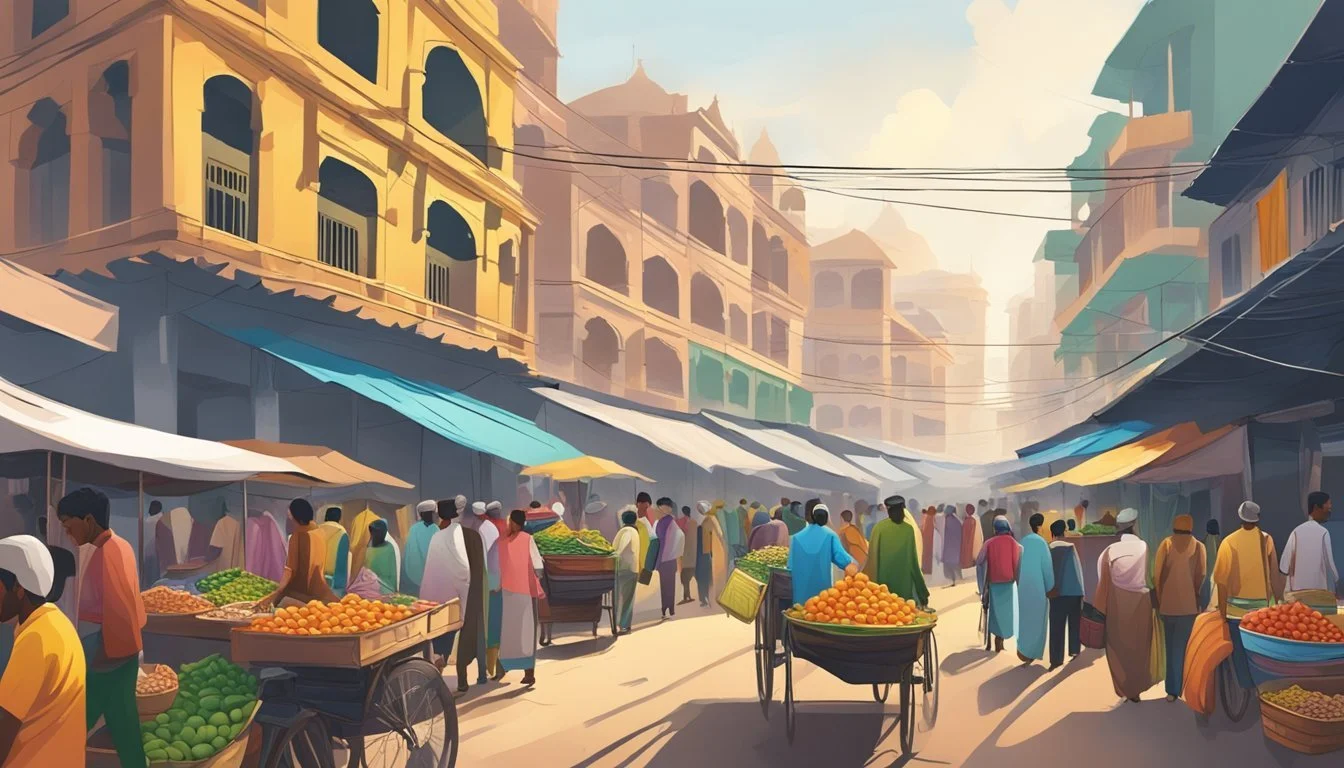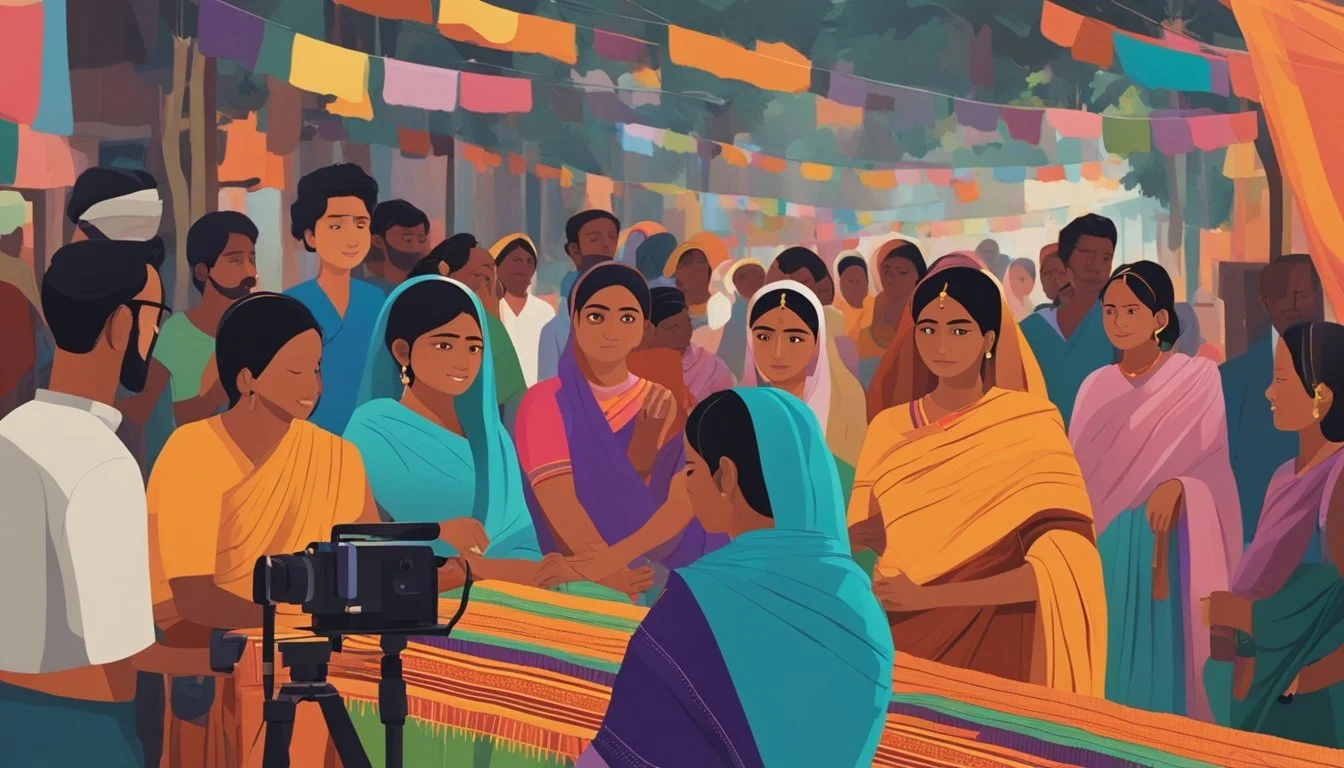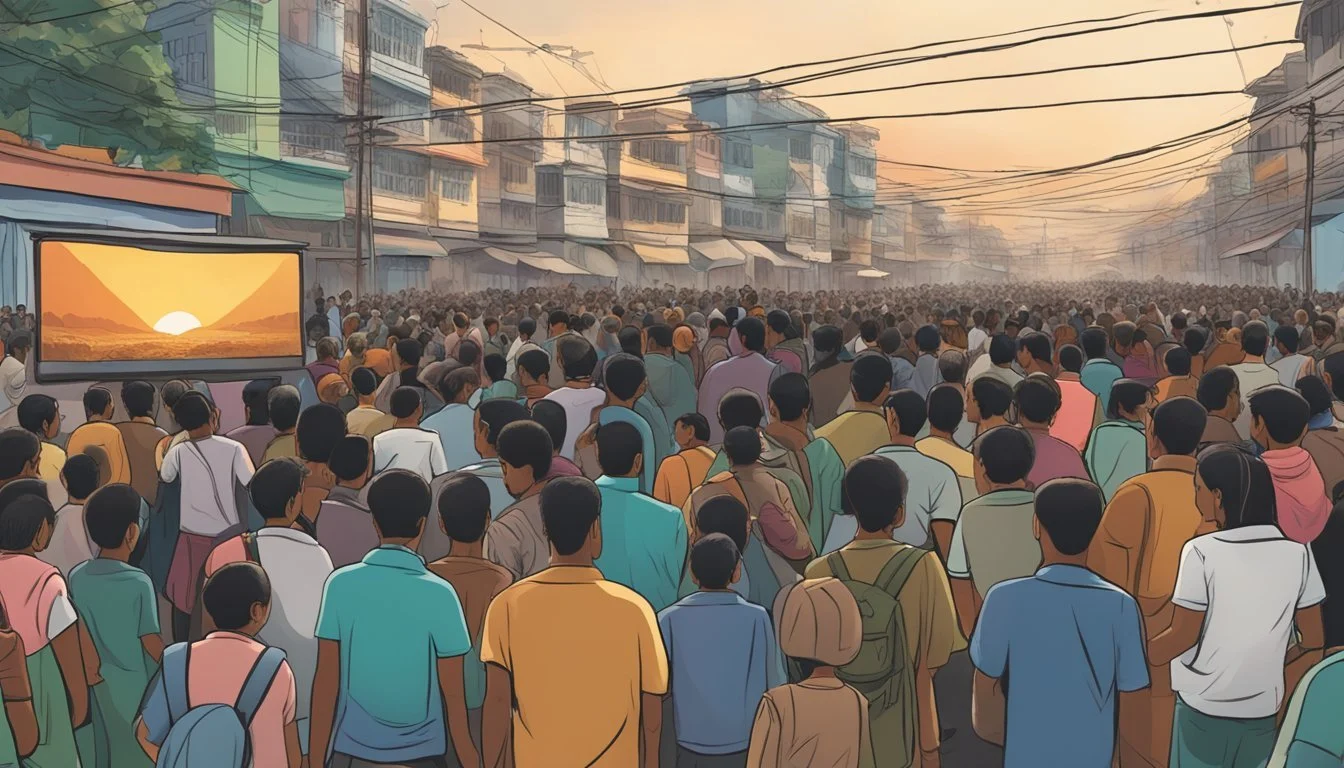10 Thought-Provoking Documentaries About Bangladesh
Unveiling the Nation's Rich Tapestry
Bangladesh, a nation of vibrant culture and complex history, offers a wealth of captivating stories for documentary filmmakers. From its bustling cities to remote rural areas, the country presents diverse subjects that have caught the attention of both local and international directors. These documentaries provide insightful glimpses into Bangladesh's social issues, environmental challenges, economic realities, and rich cultural heritage.
The selection of documentaries about Bangladesh covers a wide range of topics, reflecting the multifaceted nature of the country. They explore themes such as climate change impacts, the garment industry, religious practices, and the daily lives of ordinary citizens. Through powerful storytelling and striking visuals, these films offer viewers a deeper understanding of Bangladesh's unique place in the world and the challenges its people face.
1) The Fault in Our Stars: The Legacy of Rana Plaza
On April 24, 2013, the Rana Plaza building in Dhaka, Bangladesh collapsed, resulting in the deaths of over 1,100 garment workers. This tragic event became a pivotal moment in the global fashion industry, exposing the dangerous working conditions in many garment factories.
The documentary "The Fault in Our Stars: The Legacy of Rana Plaza" examines the aftermath of this disaster and its lasting impact on Bangladesh's garment industry. It explores the changes implemented in factory safety standards and worker rights in the years following the collapse.
The film interviews survivors, family members of victims, and industry experts to provide a comprehensive look at the event's consequences. It highlights the formation of the Accord on Fire and Building Safety in Bangladesh, a legally binding agreement between brands and trade unions to ensure safer working conditions.
"The Fault in Our Stars" also delves into the ongoing challenges faced by garment workers in Bangladesh, including low wages and limited collective bargaining rights. The documentary questions whether enough has been done to prevent similar tragedies from occurring in the future.
Through powerful imagery and personal stories, the film serves as a reminder of the human cost behind fast fashion. It challenges viewers to consider their role as consumers in supporting ethical manufacturing practices.
2) Matir Moina: Beyond Religious Boundaries
Tareque Masud's 2002 film "Matir Moina" (The Clay Bird) offers a nuanced exploration of religious and political tensions in East Pakistan during the late 1960s. Set against the backdrop of the brewing Bangladesh Liberation War, the film follows a young boy's experiences at an Islamic school.
The story delves into the complexities of religious fundamentalism and its impact on society. Through the protagonist's journey, viewers witness the clash between moderate and extremist interpretations of Islam.
Masud's semi-autobiographical narrative provides insight into the role of religion in shaping national identity. The film portrays how differing religious views influenced people's stances on the independence movement.
"Matir Moina" garnered international acclaim, winning the FIPRESCI Prize at the 2002 Cannes Film Festival. Its honest depiction of a pivotal moment in Bangladesh's history resonated with audiences worldwide.
The film's thoughtful approach to sensitive topics makes it a valuable resource for understanding the cultural and religious landscape of pre-independence Bangladesh. It encourages viewers to consider the impact of religious ideology on political movements and social change.
3) Bangladesh: Politics, Poverty and People
Bangladesh's complex political landscape and socioeconomic challenges are explored in several thought-provoking documentaries. These films shed light on the nation's struggle with poverty and its impact on everyday citizens.
Some documentaries focus on Bangladesh's turbulent political history, including its fight for independence and subsequent military coups. They examine the country's journey towards democracy and the ongoing tensions between political parties.
Poverty remains a pressing issue in Bangladesh, and many films delve into its root causes and consequences. They highlight the stark income inequality and lack of access to basic resources faced by a significant portion of the population.
The resilience of Bangladesh's people is a common theme in these documentaries. Filmmakers capture stories of individuals and communities working to improve their lives despite difficult circumstances.
Several documentaries also explore Bangladesh's rapidly growing garment industry. They examine the harsh working conditions and low wages, as well as efforts to improve worker safety and rights.
These films provide valuable insights into Bangladesh's social fabric, showcasing the country's rich cultural heritage and the challenges faced by various communities, including religious and ethnic minorities.
4) The Last of the Biharis: Stateless Lives
This documentary sheds light on the plight of Bihari people in Bangladesh. After the 1971 war, many Biharis found themselves stranded in refugee camps across Bangladesh.
An estimated 300,000 Biharis remain in these camps today. The film explores their lives in 116 settlements spread across 13 districts of Bangladesh.
Dhaka, the capital, houses 100,000 Biharis in 45 settlements alone. The documentary examines their unique status as a stateless population for decades.
It chronicles the legal battles that led to a landmark 2008 Supreme Court decision granting them Bangladeshi citizenship. The film captures the challenges Biharis face in education, employment, and social integration.
Interviews with camp residents reveal their struggles with identity and belonging. The documentary also highlights efforts by NGOs and activists to improve living conditions and opportunities for this marginalized community.
Through personal stories, the film illustrates the complex history and ongoing issues faced by Biharis in Bangladesh. It raises important questions about nationality, human rights, and the long-term impacts of political conflicts on civilian populations.
5) Bangladesh: Women Entrepreneurs Rising
Women entrepreneurs in Bangladesh are making significant strides in the business world. Despite facing numerous challenges, they are breaking barriers and creating opportunities for themselves and others.
Taslima Miji stands out as a prime example of female leadership in Bangladesh's tech industry. As the CEO and founder of Techmania, she has carved a niche for herself in a male-dominated field.
Parveen Akhter's success story is equally inspiring. She founded and manages Glamour Boutique House and Training Centre, the only small factory run by a woman in Jessore. Her business employs 52 women, contributing to local economic growth and female empowerment.
Recent years have seen a notable increase in new business formation by women in Bangladesh. The number of female-headed establishments rose from 0.10 million in 2001 to 0.56 million by 2013, according to the Economic Census.
However, challenges persist. The Mastercard Index of Women Entrepreneurs in 2020 gave Bangladesh a score of 36.4 out of 100, indicating room for improvement in supporting women entrepreneurs.
Despite obstacles, women entrepreneurs in Bangladesh continue to demonstrate resilience and innovation. Their contributions are reshaping the country's business landscape and inspiring future generations of female leaders.
6) Tales of the Sundarbans: Wildlife on the Edge
"Tales of the Sundarbans: Wildlife on the Edge" is a captivating documentary that explores the unique ecosystem of the Sundarbans, the world's largest mangrove forest. The film showcases the diverse wildlife that inhabits this UNESCO World Heritage site, which spans parts of Bangladesh and India.
The documentary highlights the complex relationship between humans and nature in this fragile environment. It features stunning footage of Bengal tigers, the apex predators of the Sundarbans, as they navigate the intricate network of waterways and islands.
Viewers are introduced to other remarkable species that call the Sundarbans home, including saltwater crocodiles, spotted deer, and various bird species. The film also examines the challenges faced by these animals due to climate change and human encroachment.
The documentary sheds light on conservation efforts aimed at protecting the Sundarbans' biodiversity. It features interviews with local experts and community members who are working to preserve this unique ecosystem for future generations.
"Tales of the Sundarbans" offers a thought-provoking look at the delicate balance between human needs and wildlife conservation in one of the world's most fascinating natural habitats.
7) Clean Clothes: The Hidden Costs of Fast Fashion
"Clean Clothes" exposes the dark underbelly of the global fashion industry, with a focus on Bangladesh. The documentary sheds light on the harsh working conditions and low wages faced by garment workers in the country's numerous factories.
Viewers are taken on a journey through bustling textile factories, where workers toil for long hours in often unsafe conditions. The film explores how the demand for cheap, trendy clothing in Western countries directly impacts the lives of these workers.
Interviews with laborers, factory owners, and industry experts provide a comprehensive view of the situation. The documentary also examines the environmental toll of fast fashion, including water pollution and textile waste.
"Clean Clothes" raises important questions about consumer responsibility and corporate accountability. It challenges viewers to consider the true cost of their clothing purchases and the human impact behind each garment.
The film offers a balanced perspective, acknowledging the economic importance of the garment industry to Bangladesh while advocating for improved worker rights and safety standards. It serves as a call to action for more sustainable and ethical fashion practices.
8) The Rohingya Exodus: Humanity on Trial
This documentary examines the mass displacement of Rohingya Muslims from Myanmar to Bangladesh. It explores the events leading up to the August 2017 crisis, when violence in Myanmar's Rakhine State forced over 742,000 Rohingya to flee across the border.
The film portrays the challenges faced by Rohingya refugees in Bangladesh's overcrowded camps. It highlights their struggle for basic necessities like food, shelter, and medical care in Cox's Bazar district.
Through interviews and on-the-ground footage, the documentary reveals the ongoing persecution of Rohingya who remain in Myanmar. It shows how they continue to face discrimination, restricted movement, and denial of citizenship rights.
The film also scrutinizes the international community's response to the crisis. It examines the role of humanitarian organizations and the efforts to hold Myanmar's military accountable for alleged human rights violations.
By presenting personal stories of Rohingya individuals, the documentary brings a human face to the crisis. It captures their resilience and hopes for a safe return to their homeland, while questioning the world's commitment to protecting vulnerable populations.
9) Dhaka's Dance: The Unheard Voices of Garment Workers
"Dhaka's Dance" sheds light on the struggles of Bangladesh's garment workers. The documentary explores the lives of those who form the backbone of the country's textile industry.
Viewers are taken inside the crowded factories of Dhaka, where workers toil for long hours in challenging conditions. The film reveals the stark reality of low wages, with many earning less than $2 per day.
Safety concerns are a central theme, highlighting the impact of disasters like the Rana Plaza collapse in 2013. The documentary shows how this tragedy sparked global attention and led to some improvements in building safety.
"Dhaka's Dance" also gives voice to the workers themselves. Through intimate interviews, it shares their hopes, dreams, and daily challenges. The film captures their resilience and determination to improve their lives.
The documentary examines the complex relationship between the garment industry and Bangladesh's economy. It explores how the sector has contributed to economic growth while also perpetuating difficult working conditions.
Efforts by labor unions and activists to advocate for workers' rights are featured. The film shows both the progress made and the ongoing struggles faced by those fighting for fair treatment and better wages.
10) Living on Borrowed Time: Climate Change in Bangladesh
This documentary examines Bangladesh's vulnerability to climate change impacts. As one of the world's most densely populated countries, Bangladesh faces severe risks from rising sea levels and extreme weather events.
The film highlights how millions of Bangladeshis living in low-lying coastal areas are already experiencing more frequent flooding and saltwater intrusion. It shows communities struggling to adapt as farmland becomes less productive and drinking water sources are contaminated.
Interviews with climate scientists explain how Bangladesh could lose up to 20% of its land area to sea level rise by 2050. This could displace tens of millions of people, creating a massive humanitarian crisis.
The documentary also explores innovative adaptation efforts. It features projects to build flood-resistant housing and develop salt-tolerant crop varieties. Community-based early warning systems for cyclones and storm surges are highlighted as life-saving measures.
Government officials discuss plans to strengthen coastal embankments and create a "green belt" of mangrove forests as natural buffers. However, the film emphasizes that global action to reduce emissions is ultimately needed to secure Bangladesh's future.
Historical Context of Documentary Filmmaking in Bangladesh
Documentary filmmaking in Bangladesh has evolved alongside the nation's tumultuous history and rich cultural heritage. This art form has played a crucial role in capturing and preserving important moments, social issues, and cultural narratives.
Key Milestones in Bangladeshi Cinema
Bangladesh's documentary tradition began during the Liberation War in 1971. Zahir Raihan's "Stop Genocide" marked a significant milestone, documenting the struggle for independence. In the 1980s, filmmakers like Tanvir Mokammel emerged, focusing on social and political themes.
The 1990s saw a surge in documentary production. Tareque and Catherine Masud's "Muktir Gaan" (1995) became a landmark film, blending archival footage with contemporary interviews to tell the story of Bangladesh's liberation.
The 2000s brought international recognition. Yasmine Kabir's "My Migrant Soul" (2000) and Tanvir Mokammel's "Teardrops of Karnaphuli" (2005) gained acclaim at global film festivals.
Influence of Socio-Political Changes
Bangladesh's political landscape has significantly shaped its documentary filmmaking. The 1971 Liberation War inspired numerous films chronicling the struggle and its aftermath. These works served as historical records and tools for national identity formation.
Economic liberalization in the 1990s led to increased funding opportunities and technological access. This period saw a rise in documentaries addressing social issues like poverty, women's rights, and environmental challenges.
The digital revolution of the 2000s democratized filmmaking. Low-cost equipment and online platforms allowed more voices to emerge. Documentaries began tackling diverse topics, from climate change in the Sundarbans to the garment industry's working conditions.
Recent years have seen a focus on human rights and social justice issues. Films like "The Dark Side of Bangladesh's Garment Industry" highlight ongoing societal challenges, reflecting the nation's evolving socio-political landscape.
Impact of Documentaries on Social Awareness
Documentaries focused on Bangladesh have illuminated critical issues and catalyzed social change. These films have brought environmental concerns and economic development narratives to the forefront, educating viewers and inspiring action.
Spotlight on Environmental Issues
Documentaries highlighting Bangladesh's environmental challenges have raised global awareness. Films exploring the impacts of climate change, such as rising sea levels and increased flooding, have garnered international attention. These productions showcase the vulnerability of coastal communities and the urgent need for climate adaptation strategies.
Some documentaries have focused on the Sundarbans, the world's largest mangrove forest. They depict the delicate ecosystem's importance and the threats it faces from pollution and deforestation. These films have encouraged conservation efforts and policy changes to protect this vital natural resource.
Narratives of Economic Development
Documentaries examining Bangladesh's economic growth have provided nuanced perspectives on the country's progress. Films showcasing the garment industry have shed light on worker conditions, sparking debates about labor rights and ethical consumerism.
Several productions have highlighted innovative microfinance initiatives in rural areas. These documentaries demonstrate how small loans empower women entrepreneurs and contribute to poverty reduction. By sharing success stories, they've inspired similar programs in other developing nations.
Films exploring urbanization in Dhaka have captured the rapid transformation of the capital city. They reveal both the opportunities and challenges of this growth, prompting discussions about sustainable urban development and inequality.






